Famous for their outgoing, happy nature, Papillon dogs are among the most well-known toy dogs. Descending from the toy spaniels breed, Papillons have a long history. Even though energetic and lively, these small and elegant dogs are not considered nervous. The butterfly-like ears of the dog are the reason behind its name. These small dogs are considered one of the ten most intelligent dog breeds worldwide. They also secured a place in the list of the top forty most popular companion pets.
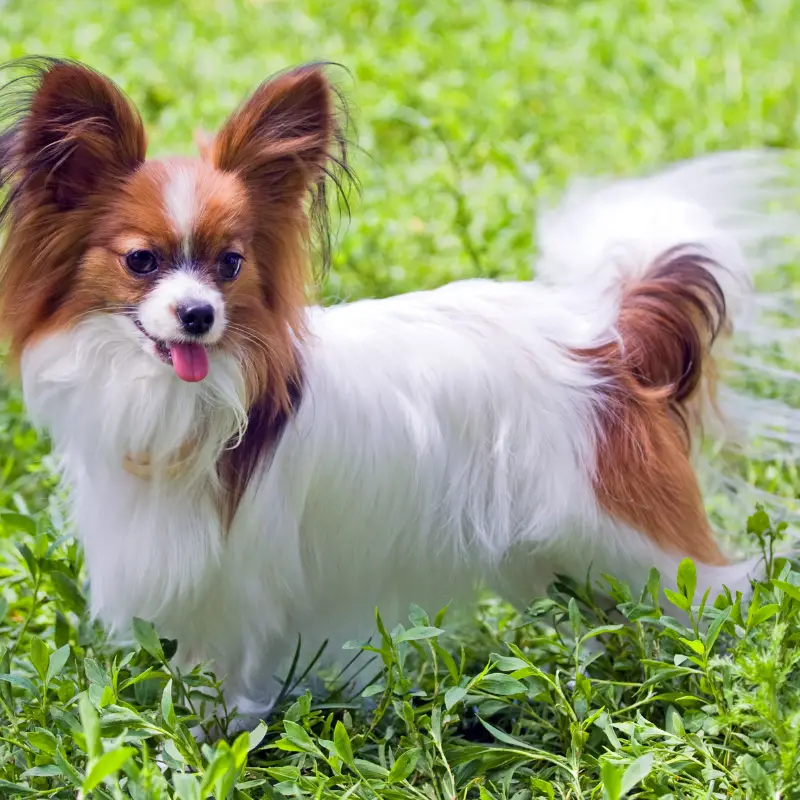
The Spartan characteristics of these dogs make them a favourite of all. Due to their small size, most people mistake Papillons for lap dogs. These dogs are more playful and active to become a perfect laptop. They will not remain content by sitting beside you on the couch throughout the day. They, however, love their owner’s companionship and always try to be there where their human companions are. Also, a Papillon is not the right dog breed for you if you stay away from home for a long. You need to know everything about this breed beforehand to understand whether you would be a good match for them and take on the responsibility of welcoming a Papillon into your home.
Breed Overview
- Type: Toy Breed
- Weight: 4-9 Pounds
- Height: 8”-11” (20-28 cm)
- Family: Spaniel
- Energy Level: Very Energetic
- Life Expectancy: 12-15 years
Personality
Papillon dogs are alert, happy, and friendly. They are not aggressive at all or shy. Papillon takes excellent enjoyment in exercising and playing. These highly energetic dogs are trainable and well known as a doer instead of a cuddler. These dogs require regular exercise to remain healthy and happy, thanks to their intense energy levels.
Even though the slight frame of these dogs can make you question their physical ability, Papillons can walk great distances without any problem. These dogs do not have any self-awareness or a sense of self-preservation. These dogs can get into trouble quickly with the bigger dogs. Despite their small size, these dogs do not back down, much like the Yorkshire Terrier dog breed. In a quarrel with a giant dog, the smaller Papillon will try to fight it out to the very end, whilst always thinking they have a chance.
As they do not have self-preservation, they can try to jump down from heights they cannot physically handle. Compared to most toy dog breeds, the Papillons are not anxious or shy.
Intelligent
These dogs are trendy for their intelligence level. It is easier to train these dogs to respond to your command thanks to their intelligence. These dogs are one of the most obedient and responsive toy breeds globally. While these dogs are highly energetic, they are very gentle towards humans.
Child-friendly
That’s what makes these dogs a perfect member for families with children. However, parents should always be vigilant when these dogs interact with small and active children. The reason is that a dog can get hurt if the playing gets rough. In other cases, Papillons can get hurt when they try to escape from the embrace of an overly possessive child.
Pet-friendly
The Papillon dogs are mostly friendly with other pets if they get socialised from the very beginning. Even though these dogs are not aggressive, they have a protective streak. These dogs tend to bark if a stranger approaches their homes. This trait makes the Papillons a helpful watchdog. Some dogs play an active role as a mouser at home as well. However, Papillons are very welcoming to the guests of their owners.
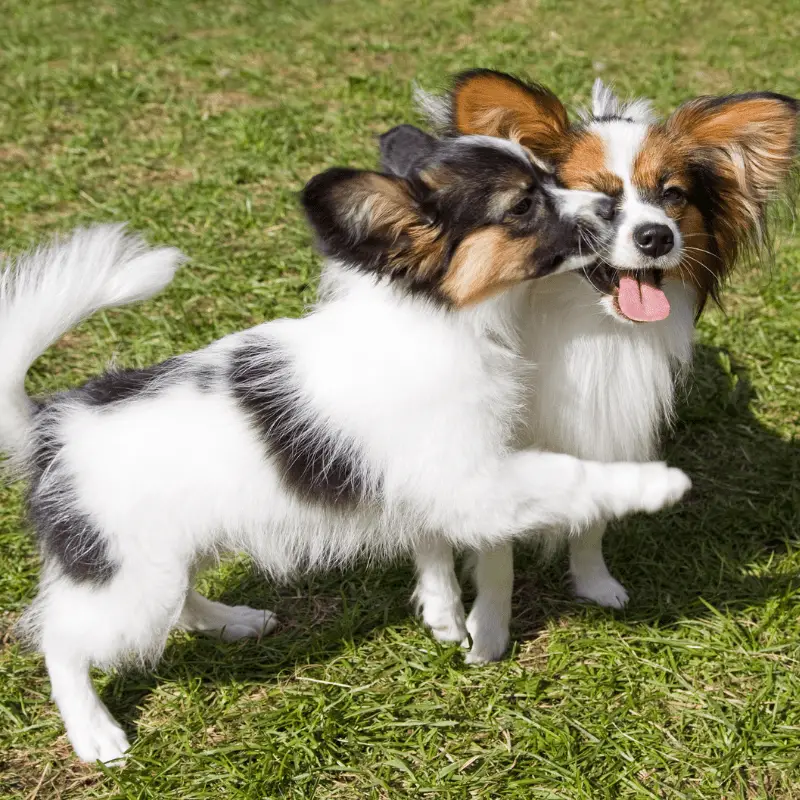
Appearance
The unique butterfly ears are the most striking characteristic feature of the Papillon dog breed. It has a strong resemblance to its sibling, the Phalene. Unlike the Papillon dogs, the ears of the Phalene dropdown. This ear structure is more like a throwback to the spaniel ancestors of these dogs. Both the Federation Cynologique and the American Kennel Club consider the Papillon and the Phalene members of the same breed.
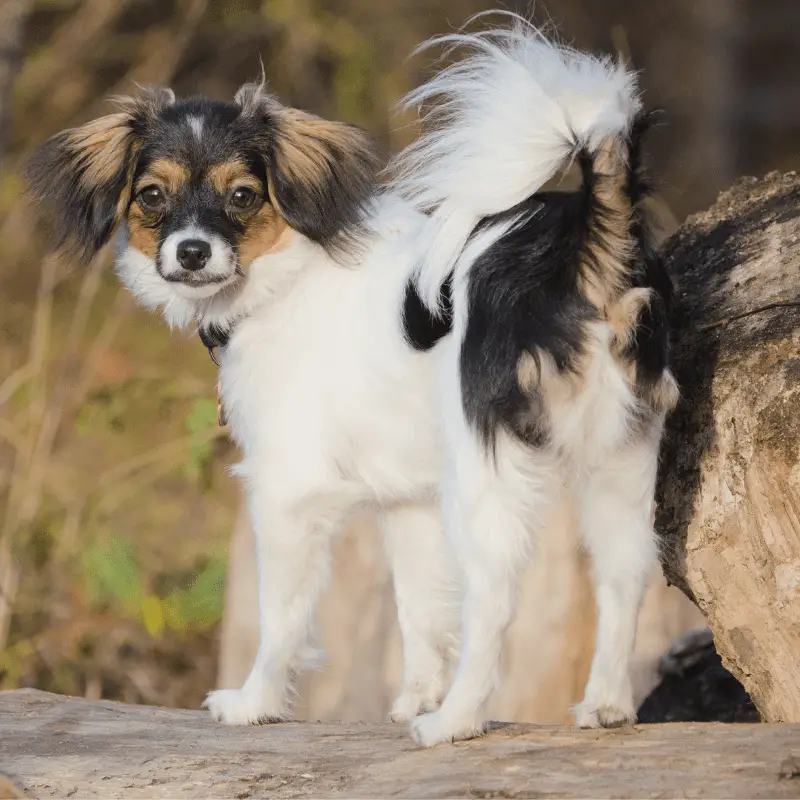
These fine-boned petite, and delicate dogs stand at less than a foot tall. The length of the dog is more than its height. The average size of a Papillon dog is about 11 inches.
The owners of the dogs should keep watch on their weight. This weight management will help these dogs to keep their free, graceful, and naturally quick gait. The tail of these dogs is arched on their back, creating a complete and large plume.
The Papillons are mostly particoloured. Some of these dogs are white with solid patches of other colours. Entirely white-coloured dogs and those with no white patches are kept outside the show rings. However, a patch between the eye leading to a noseband, emphasising the butterfly effect, is more desired than dogs with solid coloured heads. However, it is only a preference and not at all a requirement.
The dogs’ eye rims, nose, and lips should be black. The dogs’ paw pads may vary in colour from black to pink, depending on the dog’s coat colour. The soft layer of the coat is straight and long. The Papillons have short hair on their skull and muzzle. However, the coat extends significantly on the legs, chest, and ears.
Recommended Read: Do Papillon Dogs Shed A Lot?
Temperament
Papillons are adventurous, fun-loving, playful, outgoing dogs. They love socialising with people and other animals. Papillons do not hesitate to play with larger animals. However, it would be best to be careful as a Papillon can get easily hurt in this situation. Also, make sure that the larger dogs or other animals don’t consider these dogs as their prey. The keen intelligence of these dogs makes it easier for the owners to train them. Their intelligence, alertness, and intense desire to please their human companions make the Papillons one of the best therapy dogs. These dogs are also a favourite for obedience shows.
History
The root of these dogs can be traced back to France, where the breed was named for its uniqueness. In French, Papillon means butterfly. However, as not all the Papillon dogs have erect years resembling the butterflies, another name, Phalene, was designated for the dogs with the dropdown ears. In French, the term Phalene means moth.
This breed of dog was earlier known as Dwarka Spaniel. You can trace the history timeline route of the Papillon dogs back to 13th century France. Over time, Papillon dogs gained significant popularity in Italy and Spain. The painters of these countries often depicted dogs in their classic paintings. Most of the dogs seen in the paintings are of dropdown ear variants. It is believed that the erect ear of the Papillon dogs did not appear till the late 1800s. Some of the famous owners of Papillon dogs include King Louis XIV and his wife Marie Antoinette of France.
In the 19th Century, sailors brought the Papillon dogs to US shores. In 1915 American Kennel Club first recognised the breed. However, Papillon dogs were not represented by its breed club till 1935.
Care
The signature long and silky coat of the Papillon dog required moderate grooming. However, the hair of this dog breed does not grow continuously. That is why you do not need to give these dogs a haircut. Brush the dog two to three times per week to control the Shading.
Like most other small dogs, such as the Chihuahua, the Papillons also have a stubborn and feisty streak. However, if you are diligent and consistent, these intelligent dogs can become the most obedient companions.
While these dogs handle the heat pretty well, you may have to arrange for a sweater or other protection if you live in a bitterly cold area.
Training
It would be best to create a consistent obedience training schedule to keep a leash on these driven and energetic dogs. Starting a rigorous routine of exercise is also a must. These dogs can play an outstanding role as part-time exercise buddies and part-time good lapdogs. That is what makes these dogs perfect for all kinds of households. Moreover, the Papillons love children. However, before letting your child play with the dog alone, you need to make sure that they understand the basic rules of handling a dog. If mistreated, Papillons can try to defend themselves. These dogs can get injured easily.
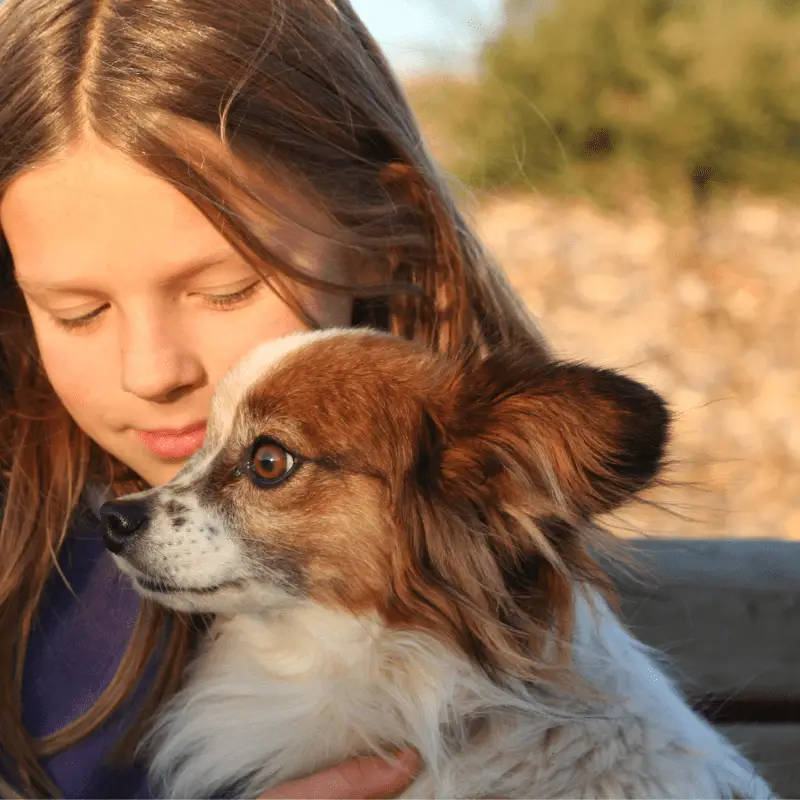
Toliet-training
It is challenging to housetrain the Papillons unless you make a tight schedule and stick to it. You have to be patient and consistent with them. The interesting fact is, you can train these dogs to do their business in the litter box.
Pet-friendly
These dogs are generally perfect for households that have more than one pet. Papillons even get along with cats pretty well if they are appropriately socialised.
Alpha
Irrespective of their size, these dogs try to become the pack leader of other household animals. If not trained properly, these dogs would try to become the pack leader of their human family. In this situation, they can develop small dog syndrome, where they jump up and growl at the owner.
Like other intelligent dogs, Papillons also love to interact with people. They need continuous mental stimulation to stay engaged. If you leave these dogs alone for a long time, they can start developing behaviour issues and other problems, like separation anxiety.
Exercise
These dogs can handle long stretches of walk pretty well. You need to give these dogs plenty of exercise time with two thirty-minute long walks per day. It is even better if you have a garden where they can run around.
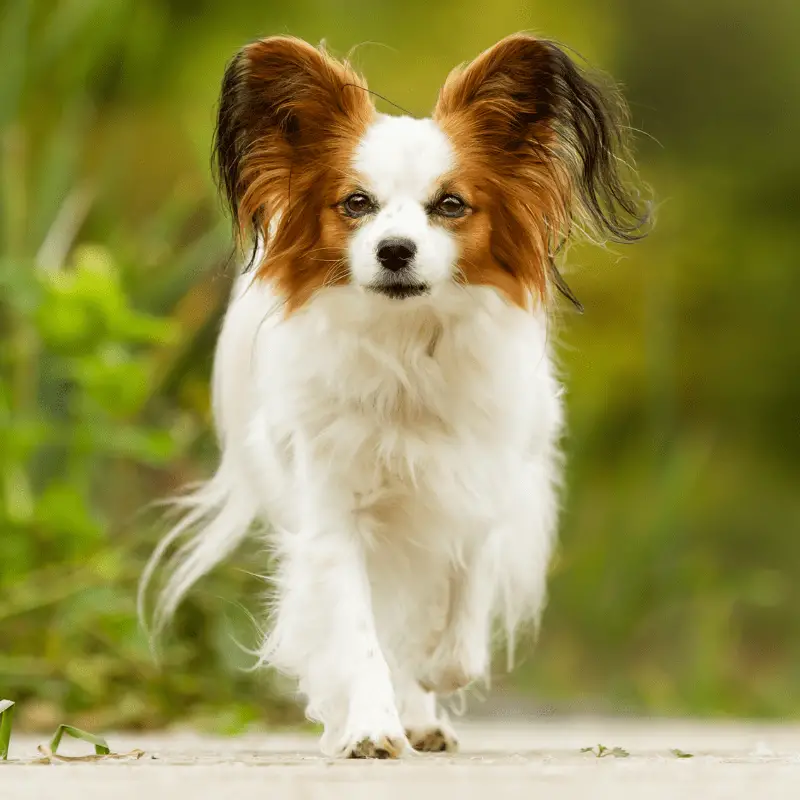
Health Issues
Most reputable breeders try to maintain the standards of the kennel clubs. The puppies bred following the guidelines are less likely to suffer from significant health issues. However, some common problems can occur in these dogs. Here are a couple of such conditions you need to consider.
Patellar Luxation
Patellar Luxation creates a pronounced limp. It is one of the common joint-related problems of small dogs. This problem occurs when the patella bones are not lined up correctly. It is a congenital condition, even though the misalignment does not get noticed at a young age.
Hypoglycemia
Hypoglycemia is one of the most prevalent problems in almost all toy breeds. However, most owners and breeders do not correctly understand hypoglycemia symptoms. More often than not, the symptoms of hypoglycemia are misdiagnosed as the symptoms of encephalitis or viral hepatitis. With the right help from a veterinarian, hypoglycemia can be treated easily in the early stages.
A Papillon dog suffering from hypoglycemia loses its natural energy and becomes lethargic. Later on, the shivering and trembling will follow. If your dog is suffering from such problems, you should get in touch with your vet immediately because If not treated right away, a dog can even die. If your pet Papillon has a greyish-blue tongue and gum, consider it an emergency. Take the dog to the vet immediately.
Progressive Retinal Atrophy
It is one of the most common problems that lead to blindness. In this case, a dog will lose the photoreceptors on the back of its eyes. The good thing is that progressive retinal atrophy can be detected years before your dog’s eyesight gets affected. Fortunately, dogs with compromised vision can compensate for it with other senses. This adaptation can ensure a healthy and happy life for even a blind Papillon dog.
Diet and Nutrition
The overweight Papillon dogs often develop knee issues. You have to keep the weight of your dog under check. Most of the dogs thrive on 1/4 to 1/2 cups of dry food. Please do not give them all the dry food in a single meal. Divide the dry food into 2 to 3 equal portions throughout the day. Never leave food out for free feeding and never offer human food to these dogs. Unless you are sure, they are safe to eat and low in fat. The right exercise, proper diet, and a structured feeding schedule can keep your dog healthy and happy for many years.
